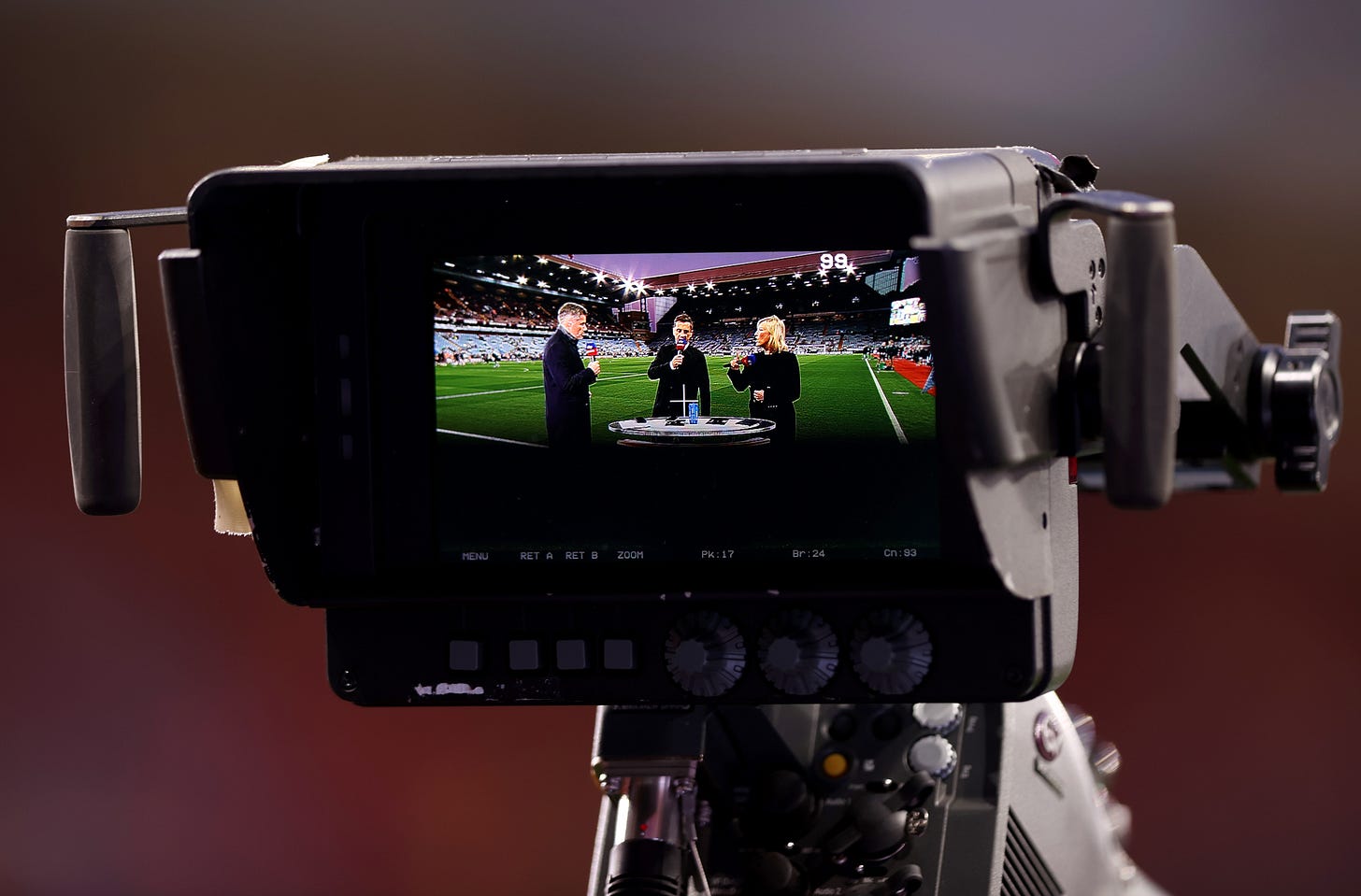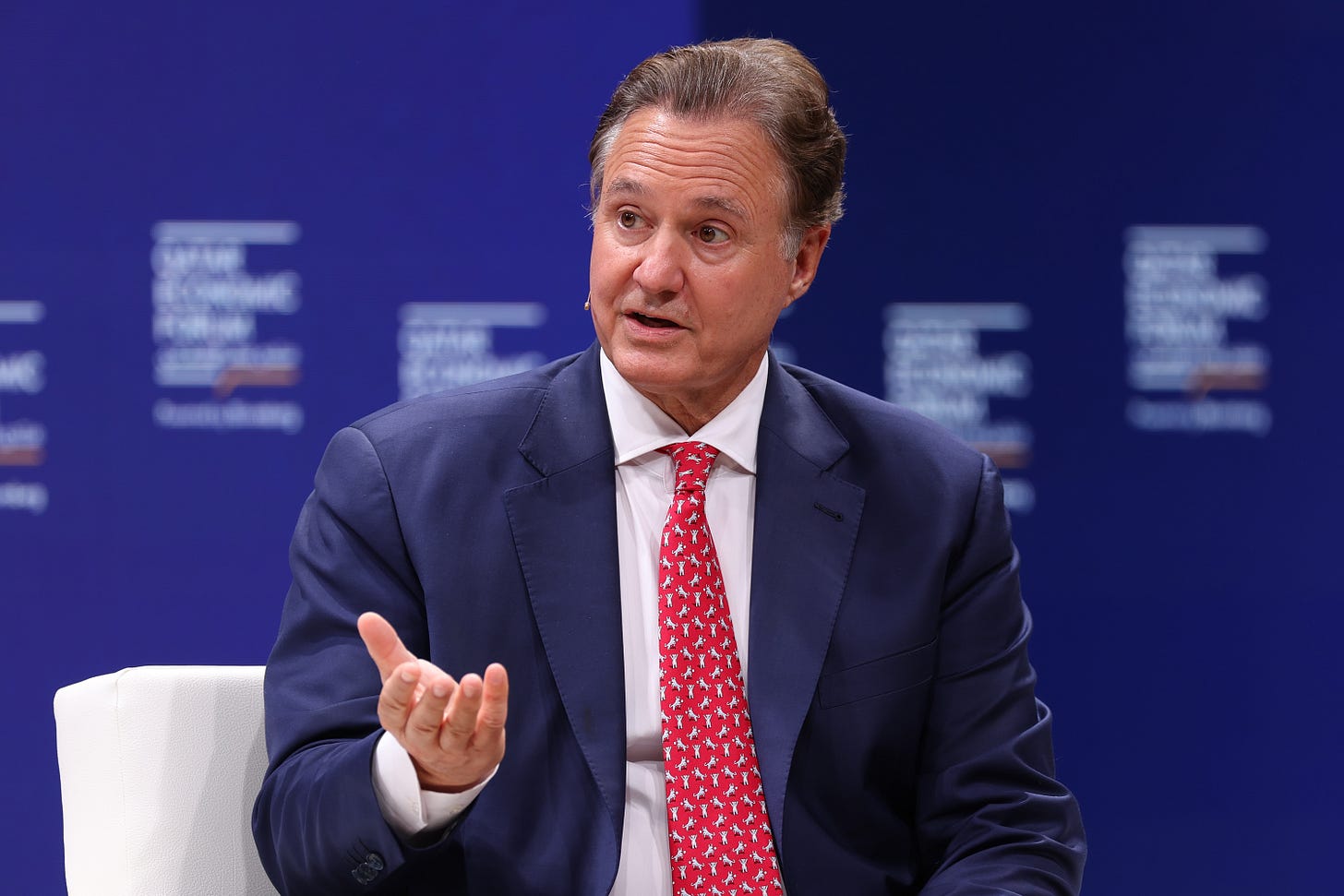Premier League TV rights bonanza looms, Everton chief on 'revolutionary' aims, FSG set sights on next investment deal
Issue number three of the Bottom Line brings the latest from the business of football
GOOD MORNING, GOOD AFTERNOON AND GOOD EVENING!
Whatever the time zone you are reading this, a big thank you for engaging and for your continued support.
I’m back for another weekly fix of the business of football, telling the story of the game behind the game, and why it matters so much to remain informed about what’s happening.
I’m at the beginning of this journey with the Bottom Line and I’m really keen to cover the stories away from the pitch that you want answered. Please get in touch with any questions or suggestions of the kinds of things you’d like to see more (or less) of as we move forward.
This week we take a look at the upcoming Premier League TV rights tender, the continued love affair that American private equity has with sport, and in particular European football, as well as Everton’s stadium hopes and what is next for Liverpool owners Fenway Sports Group.
Thanks again for your support.
‘WINTER IS COMING’ - OR IS IT?
The rise, success and continued dominance of the English Premier League from a financial perspective is something that has long been predicated on ever-increasing sums paid out to show games by broadcasters.
When the Premier League launched in 1992, its media partnership with Sky Sports changed the way that the British public consumed football forever. A little over 30 years on and Sky Sports is still the main domestic broadcast partner, currently joined by TNT Sport (formerly BT Sport) and Amazon Prime Video.
At close to £5bn for the current three-year TV cycle, Premier League clubs continue to have it better than any other football clubs on the planet when it comes to how much they get from the broadcast deals struck by their respective leagues. But for the EPL it is a figure that is set to rise higher by the time the next 2025 cycle comes in, with the domestic rights having been rolled over at the same value as the previous three years back in 2021, with the status quo due to the uncertainty that remained about just what the future of live sport might look like given the impact of the pandemic on the ecosystem.
The negotiation for the rights for the international markets saw them tip over the £5bn mark, meaning that for the first time ever the value of overseas broadcast rights was worth more than it was domestically to the EPL. But the pendulum is set to swing back in the direction of the UK when it comes to value for the next set of rights, with live matches increasing from 200 to 270 and the cycle moving to four years from the long-established three.
Currently Sky has four packages consisting of 128 matches per season, TNT two packages with 52 matches and Amazon has one package of 20 matches. Five live packages of between 42 and 65 games are going up for tender in a four-year deal from the 2025-26 season. The Saturday afternoon 3pm blackout will remain in place but every 2pm Sunday kick-off will be televised.
What that means is more security for broadcasters, where the short cycle and high cost of set-up that has seen it become something of a monopoly for Sky, may now encourage other major media companies to show their hand, particularly the streaming giants given the global trends around cord cutting when it comes to the traditional sports bundle that consumers have subscribed to.
Quizzed on the broadcast tender at Leaders in Sport 2023 at Twickenham last week, Crystal Palace chairman Steve Parish said: “I think it’s good, I think it’s exciting, particularly for the fans. I think they made a good decision in keeping the 3pm off television, I think that is very important for participation and very important for attendance in the lower leagues. It’s also culturally very important.
“They have increased the number of games by a positive amount. It has been packaged in such a way that they should create good and healthy competition, which is obviously what OFCOM and consumers want. It’s an exciting moment. But it is also a difficult moment where you have the streamers, the nascent streamers, battling with the bundlers. You can see that creating a streaming platform for one sport or one property is very difficult. So even on the streaming platforms they are going to end up with some kind of bundle, lots of shoulder content on multiple streams.
“We are, I think, in a short-term blip in the diminution of media rights, but long-term the streaming is going to allow fans to see more.” STEVE PAGLIUCA
“It is quite confusing for consumers to buy all these individual streams so there is room for a bundle that you think of as your base TV product.
“I’m very enthusiastic about it. The Premier League is excellent at selling rights and we’ve got excellent partners in the marketplace and a good amount of competition, and it’s an exciting time.”
The short cycle has been at odds with what has happened in markets such as North America, where broadcasting deals of up to 10 years have delivered huge value, while also giving far greater security to investors, something that has aided the valuation of North American major market teams across the NFL, NBA, MLB, NHL and, more recently, the MLS through its multi-year deal with Apple TV+.
At present, through the Premier League’s equal share, every club receives £31.8m from the domestic TV rights, with clubs receiving around £1.2m every time they feature in a live broadcast through what is known as facility fees. There is also a merit payment made from both domestic and international rights, dependent on where a club finishes in the league table, with payments made on a sliding scale and arriving from the money that the Premier League raises from its broadcast rights tender.
Across the English Channel there is a very different tone when it comes to media rights for Ligue 1, the premier domestic football competition in France.
French football’s Professional Football League (LFP) has scrapped the auction for Ligue 1’s domestic broadcast rights after failing to attract any bids matching its desired valuation. The LFP had been seeking €1bn (£870m) per year in revenue for the next five-year period, from 2024 to 2029, but while having received bids, none of them met with the desired sum that the LFP had been seeking, with one broadcaster DAZN understood to be preserving some funds for a serious play for a chunk of the expanded EPL rights from 2025.
The lack of a deal being agreed at the desired figure gives rise to considerable uncertainty for French teams, still bruised by the collapse of the Mediapro TV deal in late 2020 that saw the rights sold in a cut-price auction to Amazon after the company failed to keep up with its financial commitments.
While the EPL and its member clubs may be extremely bullish on the potential for what comes next, with the value of their teams set to rise in line with the strength of the deal, especially in the case of clubs such as Liverpool, Manchester United and Manchester City, a word of warning for some potential pull-back before the streamers truly arrive to shake up the live sports broadcasting industry came from Atalanta owner, private equity giant and co-chairman of Bain Capital, Steve Pagliuca.
Speaking at Leaders in Sport 2023, Pagliuca said: “I’ve been investing in media companies for 40 years now and you’ve seen cycles of bundling, unbundling, re-bundling and unbundling. We’re now in an unbundling cycle due to the technological advances in streaming. The good news about the streaming is that when we used to count fans at the (Boston) Celtics it would be in the hundreds of thousands, then it became millions. With cable and now streaming it becomes hundreds of millions able to watch any game at any time.
“The bad news is that the streamers, the Google’s and Amazon’s, are now in a battle with the networks and so they spend so much money bundling the product that you’re going to see a short-term pull-back. We are, I think, in a short-term blip in the diminution of media rights, but long-term the streaming is going to allow fans to see more.
“You can actually tier your fans who want to pay for a premium product of say $50 per month, and then the fans who just want to watch one game. That will lift the revenues even beyond what we have now. But we are now in a transitional period and I think that winter is coming when it comes to media rights for maybe the next three or four years until we get back to a trend of streaming and reach all those fans globally.”
Keep reading with a 7-day free trial
Subscribe to The Bottom Line to keep reading this post and get 7 days of free access to the full post archives.






